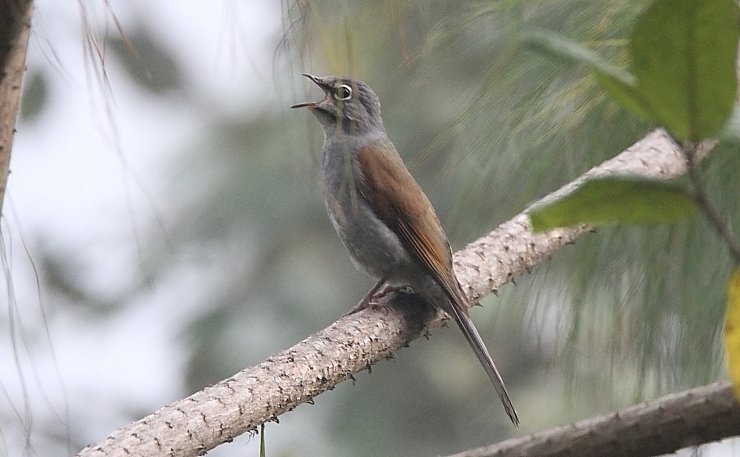
I recently noticed that one of our other writers had included an easy-to-use link to a birdsong recording in one of their posts. This has always been a wish of mine, since many of my favorite birds here stand out as much for their songs as for their appearance. So I asked for some help with this technique, and Clare Morton helpfully explained the technique to me. Thanks, Clare! And thanks to xeno-canto.org for providing the recordings, since I don’t do recordings of my own, at least not yet.
At 62 years of age, I can be a bit slow to learn new skills. But where there’s a will… And I do indeed want this. So here goes: my top 10 birdsongs from Michoacán (chosen for reasons that are 100% personal and subjective). Please do crank up your computer sound, and click on the links printed in green.
10. Lesser Roadrunner and White-tipped Dove: Perhaps, dear reader, I should have started with a beautiful song to motivate you. But these two songs, similar and both quite un-birdlike, do amuse me whenever I hear them. And while the the gully-loving White-tipped Dove is a bird that is almost never seen, you had better know its ubiquitous song if you’re going to go birding in Michoacán. (The White-tipped Dove is actually called, in Spanish, the Paloma Arroyera, or “Gully Dove”. And sorry, I have yet to get a photo of this shy species. But then, they are not that much to look at — see my next entry.)
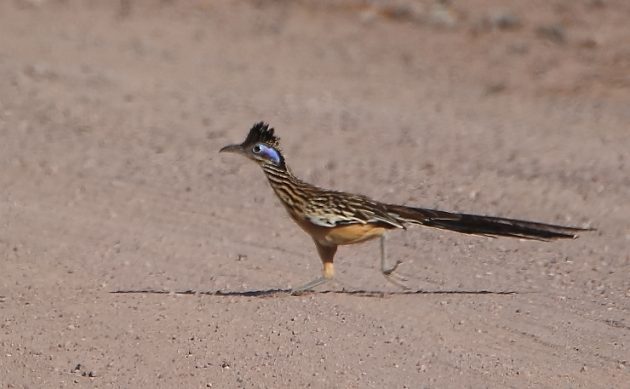
This is, of course the Lesser Roadrunner.
9. Gray-breasted Wood-Wren: Now here’s a real song for you! Like most of the species on this list, this tiny highland bird prefers to make its presence know by singing, rather than by being seen. The rule also seems to be that most birds either stand out by their song or their colors, but not both. Wood-Wrens, which like to live close to the ground in deep brush, definitely follow this rule; they are not at all colorful, but their song sure does ring.
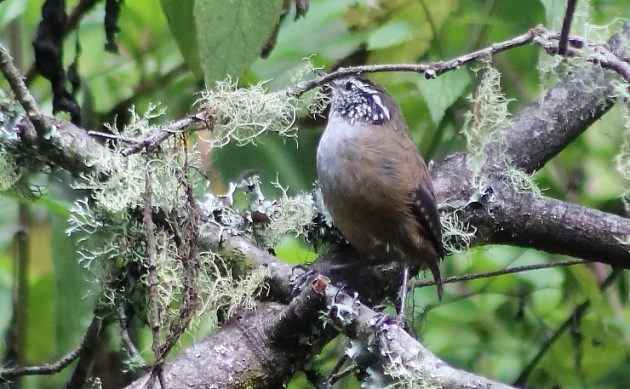
And this sad little photo is the best I have ever taken of the elusive Gray-breasted Wood-Wren.
8. Banded Wren: I love this bird’s lovely and varied song! It will not be heard in the highlands of my state of Michoacán, but once you go down into the state’s Tierra Caliente (Hot Country), this medium-large wren’s song is definitely an major part of the soundtrack.
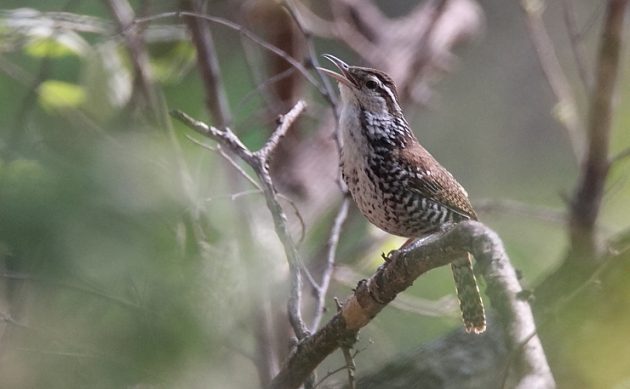
7. Mountain Trogon: This large bird of our pine-oak forests definitely is an exception that proves my beautiful-song/muted-colors rule, with its vivid underparts in the green-white-red colors of the Mexican flag, and its less-than-beautiful song. But it is a favorite of mine for one reason: it is one bird that will happily dialog with me if I whistle its song. (Ferruginous Pygmy-Owls will also sometimes do so.)
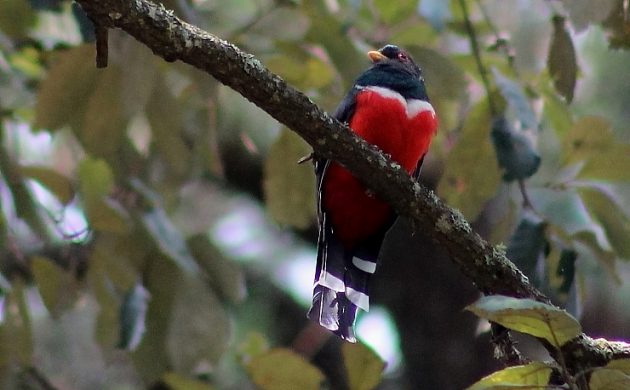
6. Gray-barred Wren: I have often mentioned this emblematic bird in my posts, but always wished I could have my readers hear this when I do so. You truly cannot experience the Gray-barred Wren without hearing the raucous calls shared among group members of this highly-social species.
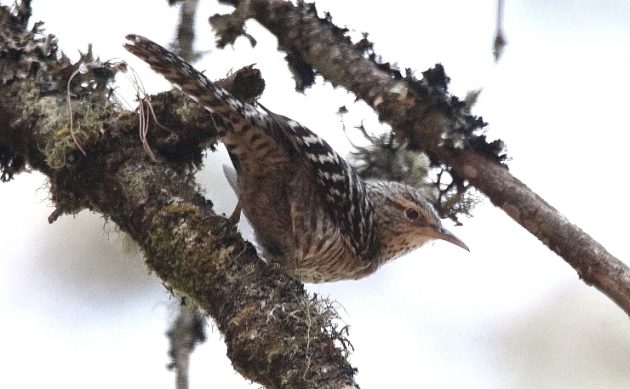
5. Chestnut-sided Shrike-Vireo: While this is another species that is more beautiful to see than to hear, its call certainly is distinctive. And, generally, you will hear it before you see it. You do want to see it.
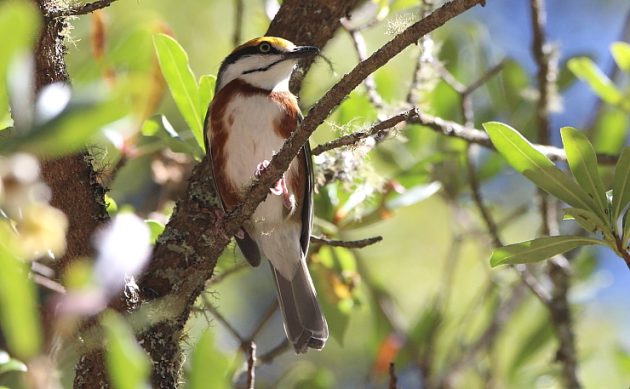
I’ve always thought my imitation of this call sounds pretty good. Unfortunately, the Shrike-Vireos do not seem to agree.
4. Blue Mockingbird: No one recording can truly represent the Blue Mockingbird’s song. That is because it is, well, a Mockingbird. It is not that close of a relative of the Northern Mockingbird, being in the same family, but a different genus. It does, however, constantly vary its calls, and sometimes copies other birds’ calls. I generally recognize its presence by its characteristically flute-y tone, and the the way its calls constantly and gradually evolve. This contrasts with the Northern Mockinbird’s song, which typically has sudden shifts between units of several repetitions each.
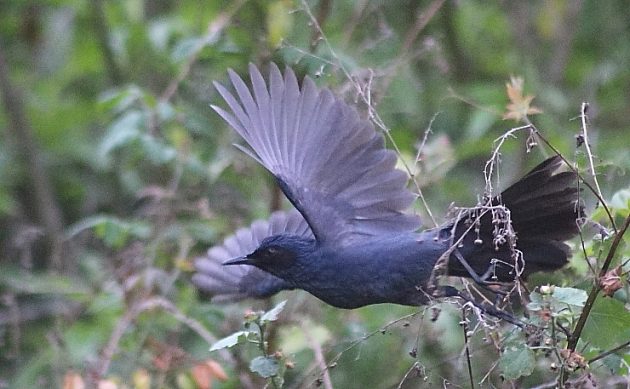
3. White-striped Woodcreeper: Faraaz Abdool recently wrote about Trinidad and Tobago’s wonderful Woodcreepers, and this one is the Woodcreeper of western Mexico’s pine-oak forests. If I ever moved away from Morelia, this ringing call would instantly transport me back here. It is not the most melodic song, but it certainly is unmistakeable and evocative.
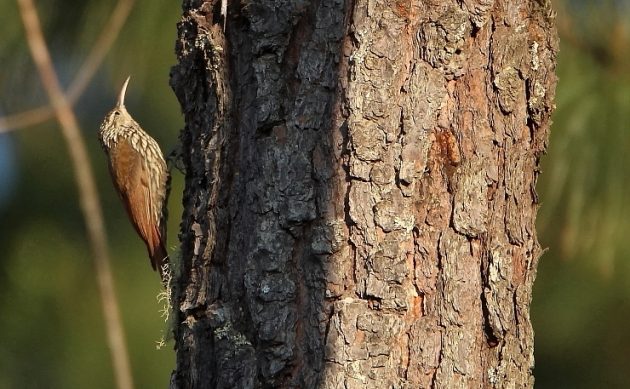
2. Slate-throated Redstart: This lovely little bird is our most common resident (breeding) warbler, and in certain places you will hear it EVERYWHERE. One of those sites is Pino Real, my first real “discovery” when I started to explore my region. It is, or at least was, a true “trash bird” there. (The site is much-degraded now.) Every other song I heard turned out to be a Slate-throated Redstart. That emotional connection earned it my #2 spot.
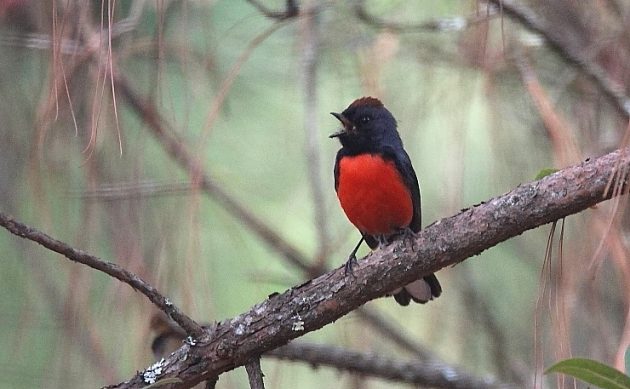
- Brown-backed Solitaire: There is no doubt about it. This is THE characteristic sound of the Michoacán highlands. Anywhere there are woods, you are likely to hear this fantastic song. There may be another bird that sounds similar, but I have no idea which one that may be. I also used to hear wild-collected caged Solitaires in suburban neighborhoods, but am delighted to report that that terrible practice seems to have mostly disappeared.
That’s a Brown-backed Solitaire at the top of this post. Once again, very vocal, not very colorful.













Congratulations, Paul, on your newly acquired skill. I always enjoy your posts! Thank you, Ruth
Thanks so much, Ruth!